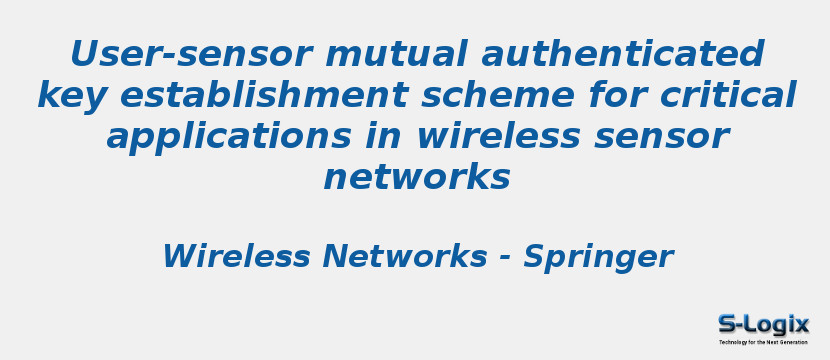Research Area: Wireless Sensor Networks
Authenticated key establishment schemes allow the participants to authenticate each other and establish a secure session key among them. These schemes play an important role in providing security and privacy in different applications. Security and privacy are very significant issues in critical applications in the Internet of Things. The present authenticated key establishment schemes in wireless sensor networks (WSNs) can not provide mutual authentication between participants. Therefore, this subject causes some security vulnerabilities for critical applications in the WSNs. In this paper, we will prove that, when an attacker is an insider adversary, the present schemes are vulnerable to user impersonation attack, sensor impersonation attack, and man-in-the-middle attack. Therefore, in order to dominate these vulnerabilities, we have proposed a new secure authenticated key establishment scheme. We have conducted formal proof using the random oracle model to show that the proposed scheme is secure. Furthermore, we applied Proverif to show that the proposed protocol can satisfy security and authentication properties. Moreover, we demonstrate that our proposed protocol is comparable in communication and computation overhead as compared to other relevant schemes. Ultimately, we present the practical demonstration of our scheme using the NS2 simulator.
Keywords:
Author(s) Name: Abdollah Jabbari & Jamshid B. Mohasefi
Journal name: Wireless Networks
Conferrence name:
Publisher name: Springer
DOI: 10.1007/s11276-020-02451-8
Volume Information: volume 27, pages 227–248 (2021)
